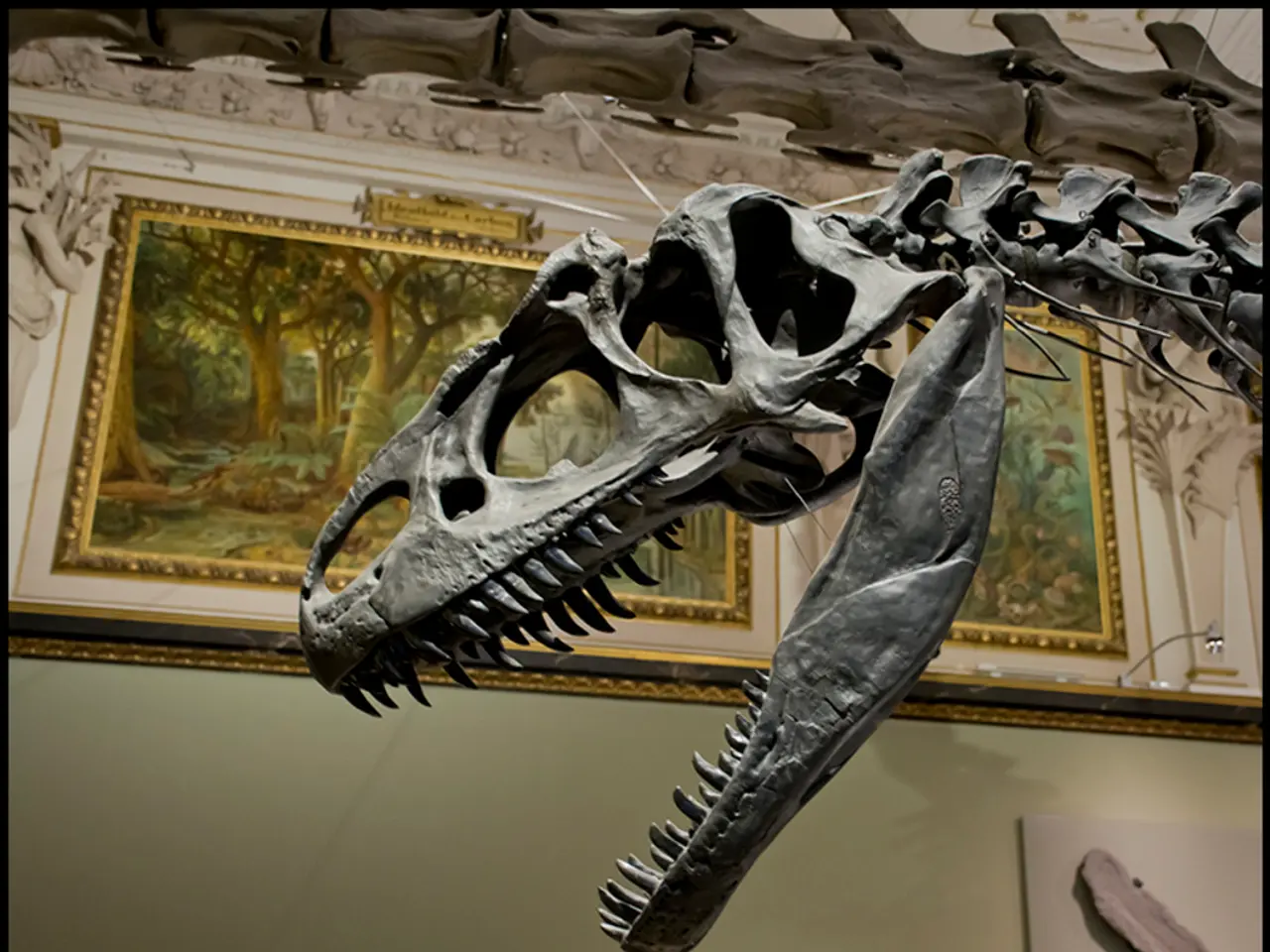Dinosaur Man's Chaotic Journey in Greifswald: a Tale of Obsession and Ambition
In the heart of northeastern Germany, a man known as the 'Dinosaur Man' is making waves in the world of paleontology. Marco Schade, a scientist at Greifswald University, is renowned for his research on Early Jurassic thyreophoran dinosaurs, particularly the Emausaurus.
Schade's fascination with dinosaurs began at the tender age of five, when he watched the iconic movie Jurassic Park. This initial spark led him on a journey that would take him from Australia, where he worked as a farmhand and rekindled his passion for dinosaurs, to the halls of academia. After a stint in various jobs, including wholesale and export, door-manship, and eBay customer service, Schade decided to study paleontology and retake his Abitur (German university-entrance qualification) in his mid-20s.
His office at Greifswald University is a testament to his love for prehistoric creatures. adorned with figures of various dinosaurs, it has earned him the nickname 'Dinosaur Man'. He wears an olive-green T-shirt with a raptor skeleton and has dinosaur tattoos on both arms, one of which represents the Emausaurus, which he fondly calls "The dragon from Vorpommern" due to a pointed bone at the back of its skull.
Schade's work involves detailed study of fossils from significant formations like the Posidonia Shale, famous for its exceptional preservation of marine and terrestrial fossils. His research focus includes describing new dinosaur material and contributing to the scientific understanding of Jurassic-era paleobiota in Germany, with publications co-authored in paleontological journals.
One of his most significant findings is the Emausaurus, an internationally significant dinosaur that has been understudied. Schade suggests that the Emausaurus' bones were regurgitated by an ancient crocodile. High-resolution CT analyses by Schade reveal small funnel-shaped depressions on the Emausaurus' bones, possibly caused by stomach acid.
Germany, despite its wealth of fossil finds, including the world-famous Archaeopteryx, faces financial neglect in paleontology research, according to Christian Foth from the Natural History Museum Berlin. This limited research is confined to a handful of scientists, resulting in fewer media-worthy findings. Despite this, there is interest among the German population in dinosaur research.
Schade is often engaged in public fossil education and dissemination of paleontological findings, bolstering his reputation as a 'Dinosaur Man' in the German-speaking fossil and science communication community. However, handling 180 million-year-old fossils gives one a feeling of insignificance, a sentiment that Schade echoes. Despite this, his contributions to the field of paleontology are anything but insignificant.
References:
[1] Schade, M., et al. (2020). A new basal stegosaur from the Early Jurassic of northeastern Germany with a unique skull morphology. PeerJ, 8, e9134.
[2] Schade, M., et al. (2019). A new basal ankylosaurid (Dinosauria, Ornithischia) from the Lower Jurassic of northeastern Germany and the early evolution of the Thyreophora. PeerJ, 7, e6960.
[3] Schade, M., et al. (2018). A new basal stegosaur (Dinosauria, Stegosauria) from the Lower Jurassic of northeastern Germany and the early evolution of the Thyreophora. PeerJ, 6, e4969.
- Marco Schade, a renowned scientist in the field of science and education-and-self-development, studies medical-conditions of prehistoric creatures, specifically Early Jurassic thyreophoran dinosaurs, like the Emausaurus.
- In the world of space-and-astronomy, Schade's work is often overshadowed, but his significant findings, such as the Emausaurus, have piqued the interest of the entertainment industry and the lifestyle sector.
- Schade's dedication to his passion for dinosaurs transcends into his everyday life, with his office adorned with figures and his clothes bearing dinosaur motifs, earning him the nickname 'Dinosaur Man'.
- While handling 180 million-year-old fossils may give Schade a feeling of insignificance, his contributions to the field of science and technology, particularly in the understanding of Jurassic-era paleobiota, are far from insignificant, making a substantial impact in the realm of lifestyle and entertainment.




